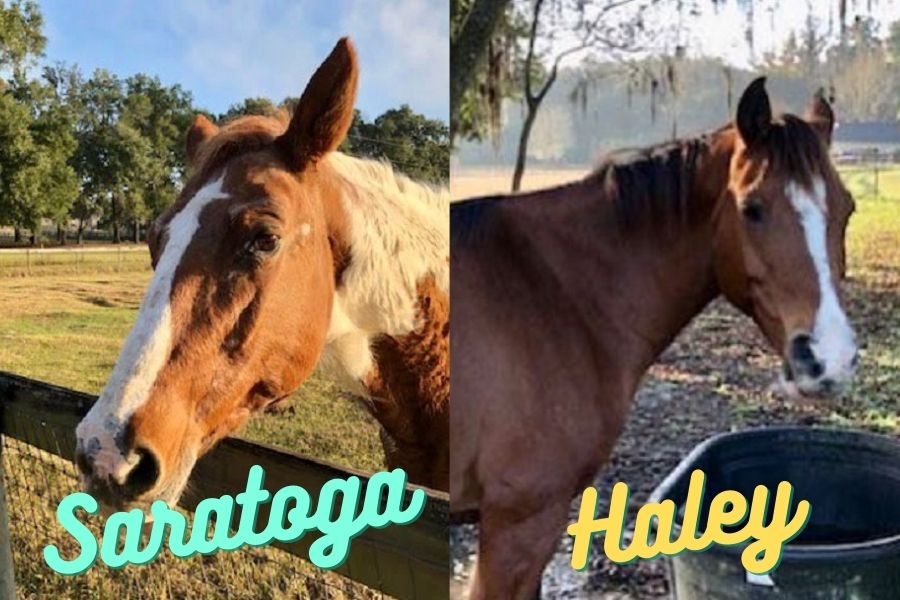Tuesdays with Tony
This week I’m going to do a rare thing for a cat…I’m going to express approval. I’m giving a gold star to Springhill’s client, Kathy, who knows just how to handle something all horse owners will have to deal with at some point. A few weeks ago, Kathy’s horses Haley and Saratoga both had an episode of colic within a few days of each other. Don’t worry, they’re both fine now.
Both of Kathy’s horses are on the Springhill Wellness plan, so my docs know their routine healthcare is up to date, and Kathy doesn’t have to pay an extra emergency fee if she has an after-hours emergency. My docs were so impressed with how Kathy handled both colic episodes that I decided to talk about what she did right in these situations.
Haley
The first colic was Kathy’s gelding Haley. Haley, who is 17, has had several mild colic episodes over the years, despite Kathy’s good care and appropriate feeding. Because of this, Kathy has a plan in place for Haley. The morning of his colic, Kathy saw him laying down quietly and less interested in his breakfast than usual. She gave the clinic a call as soon as she noticed he was uncomfortable to discuss what she saw with my docs. She took Haley’s heart rate, which was normal at 38 beats per minute, and reported it to us. My docs talked with Kathy about the signs Haley was showing and agreed that it was a mild colic that Kathy could monitor. After checking with my docs, Kathy gave the recommended dose of banamine by mouth. She then monitored Haley carefully throughout the day. She held him off feed but encouraged him to drink water. She checked his comfort and kept a close eye on how much manure he passed and how much water he drank. She updated the clinic throughout the day on Haley’s status. If needed, we were all ready to change plans and make a visit to Kathy’s farm to treat the colic. Fortunately, Haley felt better quickly and was back to his normal self without needing any more treatment.

Saratoga
The second episode was Kathy’s 30-year-old mare Saratoga. Because of her age, and the fact that she’s never colicked before, Kathy knew that Saratoga should be examined by one of my docs. Saratoga was showing more pronounced colic signs than Haley – she was down and rolling – and Kathy called the clinic as soon as she found her. One of my docs immediately headed out to examine Saratoga. She performed an ultrasound exam and a trans-rectal palpation to determine the cause and severity of Saratoga’s colic. Saratoga had a mild large colon impaction, not uncommon in times when the weather is changing. My doc passed a nasogastric tube to re-hydrate Saratoga and administered some IV medications to help her through her discomfort. Fortunately, Saratoga’s colic was a type that could be managed on the farm and wouldn’t require hospitalization or surgery. My doc suggested that Kathy offer Saratoga a bucket of water flavored with a handful of grain to encourage her to drink and help break up the colon impaction. Kathy monitored Saratoga carefully throughout the day and hand-walked her for 5-10 minutes every hour to encourage intestinal movement. The mare stayed comfortable and regained her appetite, though she was allowed only very limited food until she started passing normal manure. Kathy was joyously mucking lots of manure out of the stall the next morning and Saratoga was back to her normal self!
What Kathy did right:
- Called the clinic as soon as she noticed the colic
- Gave banamine only after discussing it with her vet and being told the correct route and dose
- Knows how to take a heart rate
- Has her vet out when it’s recommended that a visit is necessary to provide treatment
- Monitored her horse’s comfort, manure production, and water consumption
- Updated the clinic on her horse’s status after the visit
- Has her horses on the Springhill Wellness Plan so she never needs to pay an emergency fee
Are you prepared to handle this situation purrrfectly like Kathy did? If you’re not sure, give my docs a call! They are always happy to talk about measures you can take to prevent colic, and to help you deal with it if it occurs.
Until next week,
Tony
P.S. If you want to learn way more about colic than I’m willing to write down for you (cats have limited willingness to type) you have to listen to the recent podcast episode the humans did about colic. You can find it on the Podcast Page up in the menu bar, or subscribe wherever you get your podcasts. Trust me, it’s worth a listen.
Tuesdays with Tony is the official blog of Tony the Clinic Cat at Springhill Equine Veterinary Clinic in Newberry, Florida. If you liked this blog, please subscribe below, and share it with your friends on social media! For more information, please call us at (352) 472-1620, visit our website at SpringhillEquine.com, or follow us on Facebook!
[jetpack_subscription_form title="Subscribe to Whinny's Wisdoms"]

